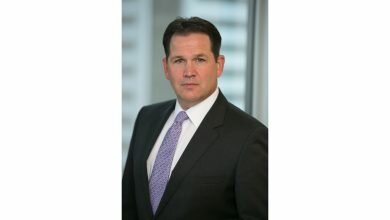Wells Fargo CEO Charlie Scharf says the bank is considering withdrawing parts of its mortgage business amid investigations into its lending practices

- Wells Fargo’s CEO suggested there could be more difficult days for the bank’s mortgage business.
- The home lending unit will not be “as large” as it is not a “standalone profit centre”, Scharf said.
- Scharf also cited the “prestige” challenges of underwriting loans for Fannie Mae and Freddie Mac.
On Wednesday, Wells Fargo CEO Charlie Scharf said the bank’s embattled mortgage business could have a smaller footprint in the future — and suggested that criticism of Wells Fargo’s home lending practices is partly to blame.
Speaking at Bernstein’s annual Strategic Decisions Conference in New York City, Scharf said Wells Fargo is “in the process of strategically changing where mortgages fit in,” adding that “mortgages are a difficult business.”
According to a transcript of his comments from data provider Sentio, Scharf cited loan standards being consistent with loans set by government-sponsored entities such as Fannie Mae and Freddie Mac.
“We basically process applications according to guidelines that GSE tells us we should do. When they deliver results, people like them, we get kudos for it. If they don’t like them , then we get to blame for it, even though we’re following other people’s underwriting guidelines,” Scharf said.
“There are some things that put you in a difficult position that we need to be very considerate of from a reputation standpoint,” he continued.
This March, Bloomberg reported that in 2020, Wells Fargo declined more than half of black homeowner refinancing applications. Bloomberg said the bank’s 47% approval rate for black customers was the lowest among major lenders, according to federal mortgage data.
Wells Fargo broke with industry-wide trends by accepting fewer refinance applications from black borrowers in 2020, a pandemic boom year for refinancing, as interest rates fell, compared to a decade ago, according to a Bloomberg analysis.
Given the standards banks are held to relative to other mortgage lenders, Scharf said, “running a mortgage business inside a bank today is very different than it was 15 years ago, and I think so appropriately. Forces you to sit back and say, ‘What does that mean? How big do you want to be? Where does it fit in?'”
In a statement provided to Insider, a Wells Fargo spokesperson said, “Recent media stories reveal the full range of Wells Fargo’s efforts to lend to black homeowners and help meet the homeownership needs of diverse customers.” Ignored critical information about the U.S., and relied on an analysis that paints a skewed picture of our lending performance.”
“Most importantly, we believe our underwriting practices are consistently enforced regardless of the customer’s race or ethnicity,” the spokesperson said.
Wells Fargo, the spokesperson also said, as the next largest bank, granted “twice as many loans overall” to black borrowers in 2020 if the loans were originated and purchased from correspondent vendors.
home lending layoffs
Scharf said home lending will continue to be an important part of Wells Fargo’s business even as the bank considers reducing its mortgage footprint.
Scharf said, “Mortgages and home loans in general are extremely important to both our customers and communities in what we do as a company. We are very committed to making sure that we serve those two populations.” Keep supporting.”
But its decision to focus on those populations could also mean Wells Fargo “we won’t be as big as historically,” he continued.
Apart from the reputed challenges of dealing with GSE loans, he also cited profitability concerns.
“We don’t think of it as a standalone profit generator where you have production, servicing, balancing. Those days are gone the right way to think about it inside our company,” Scharf said.
Scharf’s comments on Wells Fargo’s underwriting business echoed comments recently made by Kleber Santos, the bank’s head of diversified areas, representation and inclusion.
This May, Santos told Insider that criticism over the bank’s low approval rates for black borrowers was misplaced. But while Santos also said that Fannie Mae and Freddie Mac’s own underwriting guidelines were to blame for any lag in refinance approval, he did not suggest that Wells reconsider its approach to its home loan business. Were were Instead, Santos said, Wells Fargo was looking to speak to industry executives on changing the current application criteria.
Scharf also discussed the layoffs that have affected Wells Fargo’s mortgage business in recent months.
This April, the insider reported that Wells Fargo laid off staff at home lending, including loan processors and underwriters, in at least five markets, such as San Antonio, Phoenix and Des Moines. Job cuts happen because rising interest rates reduce the amount of mortgages across the industry. This spring, Wells Fargo reported that home lending revenue fell to $1.5 billion in the first quarter of 2022, down 33% from the same period last year.
“In an environment like this, it means we’ll have fewer people, and we’re doing what’s required of it. From a production side, making sure we staff properly to process business again.” But no further than what is needed in this environment,” Scharf said.
Scharf said there’s a roughly quarterly gap in how quickly Wells can take costs — including staff layoffs — out of the mortgage business. Job cuts in the mortgage business are under bad pressure, he said, adding that “every mortgage business is doing it,” and Wells has worked to keep mortgage workers at other openings at the bank.


